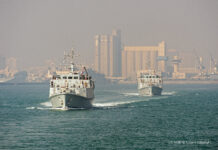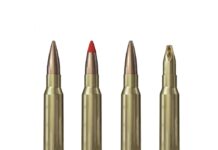Belgium and the Netherlands will replace almost their entire fleets in the next 15 years. This will mean six new ships for the Belgian Navy, and 23 for the Royal Netherlands Navy.
Some of these new ships are being developed jointly by Belgium and the Netherlands, while for some others the Netherlands is seeking cooperation with Germany.
Many vessels in the Belgian and Dutch fleets date back to the eighties and nineties and the Netherlands in particular has long postponed the replacement of many ships. Although Belgium replaced their WIELINGEN class frigates 15 years ago, they did so with Dutch M-frigates from the nineties. Both countries also operate TRIPARTITE minehunters which are over thirty years old.
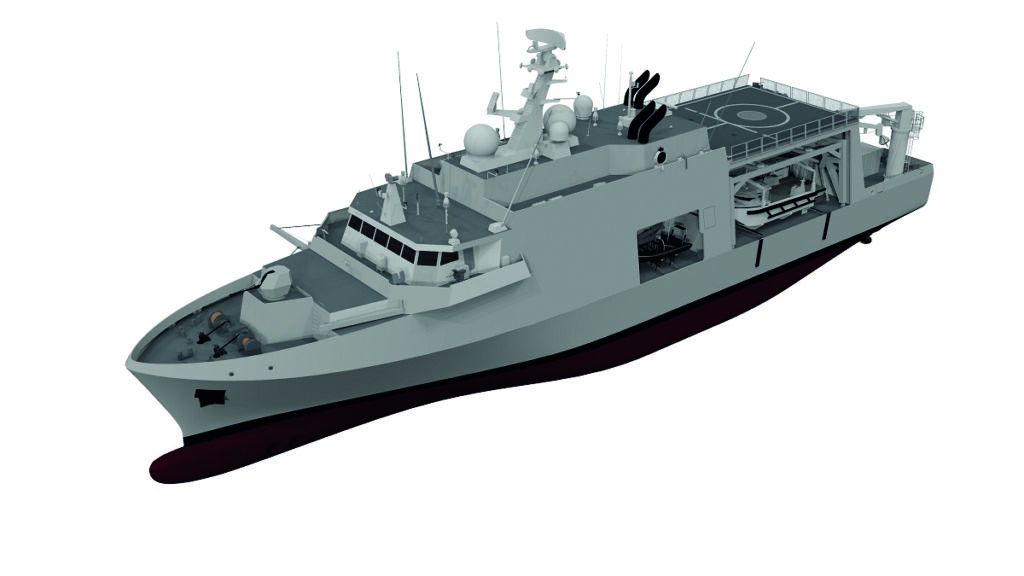
Because Belgium bought two Dutch M-frigates, both navies are equipped with the same frigates and also the same minehunters. Both navies have been working together since 1948 and have almost merged in recent years. The Belgian frigates are maintained in the Netherlands and the Dutch minehunters in Belgium. The navies share a headquarters in Den Helder (the Netherlands), their operational and logistics schools are binational, and from 2021 both fleets will receive the same uniforms. It is therefore logical that the two countries jointly replace their frigates and minehunters.
Mine Countermeasure Vessels
Already in 2013, Belgium and the Netherlands had plans to jointly replace their TRIPARTITE minehunters. Three years later, the Ministers of Defence of Belgium and the Netherlands signed a Letter of Intent for the joint replacement. It was agreed that the Netherlands would lead in the replacement of the M-frigates, while Belgium would take on the new minehunters. A European tender followed.
The project is now in full swing and the consortium Belgium & Naval Robotics, consisting of the French companies Naval Group and ECA Group, is working hard to deliver the first new mine countermeasures vessel (MCMV) in April 2024 to the Belgian Navy; the Royal Netherlands Navy will follow later. Both navies will receive six ships each.
An important part of the project is the new concept of stand-off mine warfare; the motherships remain outside the mine danger area and MCM tools operate from the mothership to detect, classify and destroy mines from a great distance, often over the horizon.
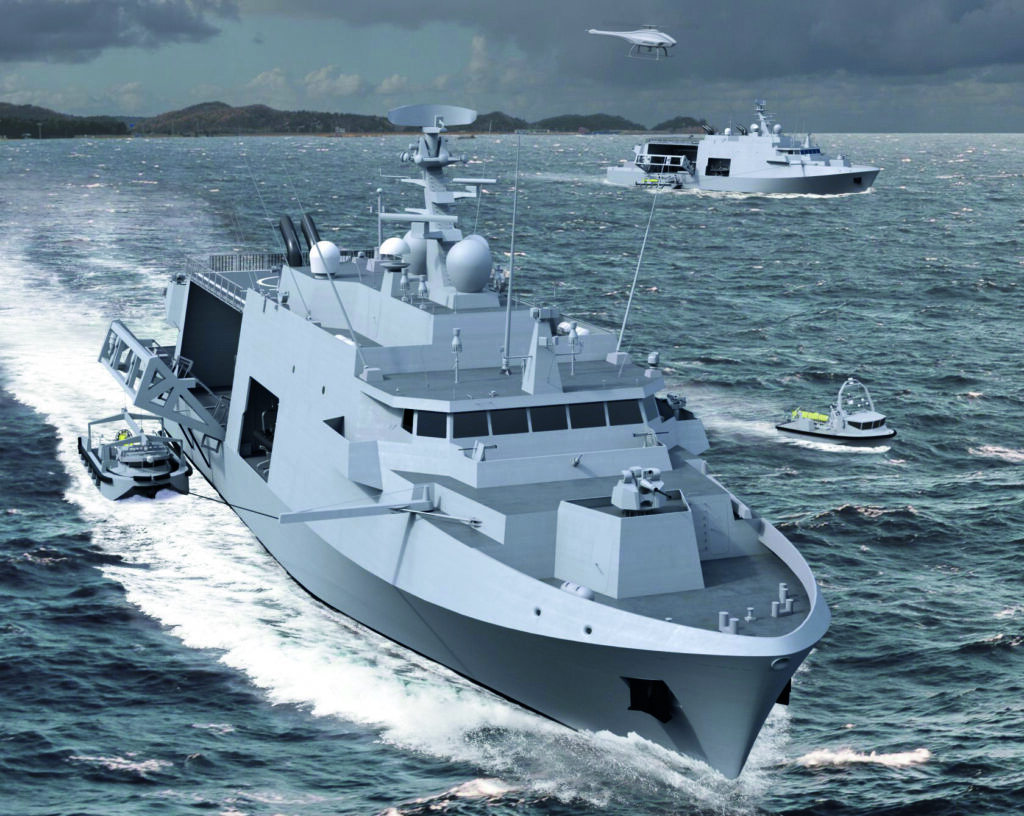
While the old TRIPARTITES are made of composite, the future MCMVs will be made of steel.
They are in fact built around the Launch & Recovery System (LARS) that was specially developed for these ships. With a length of 81.4 m and a width of 17 m, the ships have an uncommon length to breadth ratio for warships.
The LARS is mainly intended for unmanned service vehicles (USVs). The 12 m-long INSPECTOR-125 USV can operate with up to six drones in the mine danger area. These drones were developed and built by the ECA Group in Belgium. The drones in question are the T-18M UMISAS towed sonar that is dragged behind the INSPECTOR and thanks to the interferometric synthetic aperture sonar, can transmit high-resolution images to the mothership in real time. The autonomous underwater vehicle (AUV) A-18M can independently search the seabed and when a contact is made, the crew in the operations room in the mothership can inspect the mine-like object with the camera of its remotely operated vehicle (ROV), the SEASCAN. Finally, the K-STER C will destroy the object.
To operate drones over the horizon, Saab SKELDAR V-200 unmanned aerial vehicles (UAVs) provide communications between the USV and the mothership. The UAV can of course also be used for other tasks.
The latter also applies to the motherships that can accommodate 63 additional crew, in addition to the 29 permanent ship’s complement. The ships are equipped with various sensors and weapon systems and will also receive a 40 mm gun, which is somewhat unusual for modern-day MCMVs. At the time of writing, it is still not known which gun will be chosen, nor has a final choice been made for radars and electro-optical sensors.
Construction of the first ship will start on 23 February 2021 and the ships will be built in France by Kership and Piriou.
In anticipation of the arrival of these new ships and especially the new toolbox, the Dutch Navy has leased a civilian vessel, the GEOSEA. Dutch and Belgian naval personnel have been working with this ship and with drones from ECA since spring 2020 to become familiar with the new systems and to provide the manufacturer with feedback that can be used for the development of future tools. The project team is also planning to test the LARS with the GEOSEA. Whereas the ships are designed to last at least thirty years, the toolbox will be regularly updated or replaced.
M-Frigates
The replacement of the M-frigates started in the Netherlands in 2010 with the first studies carried out. It soon became clear that the Netherlands wanted to replace the frigates in cooperation with other countries. Considering Belgium also operated M-frigates, it was the logical partner, but the Netherlands also looked at the German MKS 180 frigates. However, cooperation in this area came to an end when the German ship became too big and expensive.

Belgium and the Netherlands proceeded with a Dutch design. The replacement project was officially started in the Netherlands in June 2016 and soon thereafter, it became known that Belgium had reserved €1Bn for two new frigates.
Unlike the MCMVs, no European tender was launched for these frigates, but Damen Schelde Naval Shipbuilding (DSNS) was contracted directly. That did not mean that DSNS designed the ships, because that is still largely done by the Afdeling Maritieme Systemen (Department of Maritime Systems) of the Defensie Materieel Organisatie (DMO).
Since 2013, several designs have been published, sometimes accidentally. Over the years, the size of the ship increased, but the design has eventually decreased. In 2019, design 22D was presented, and according to DMO, it represented the “ideal ship” that met the requirements, but it did not fit the budget. Research was then conducted into an off-the-shelf design of DSNS, but that ship failed to meet the requirements. DMO then removed systems from the design and some requirements were adjusted.
This resulted in DMO design 22D being modified to a 132-m long frigate, displacing 5,500 tonnes. The MK 41 VLS, with 16 cells, is primarily intended for the Evolved SeaSparrow Missile Block 2 (ESSM Bl. 2), but Belgium has previously indicated that it was considering the Standard Missile 3 (SM-3) as well. With such a weapon, Belgium wants to contribute to ballistic missile defence (BMD).
Although missiles like the SM-3 can be fitted in the MK 41 VLS, the frigate is not designed for BMD. The new frigates are in fact designed with anti-submarine warfare in mind. Since they are required to operate far from the task force in search of submarines, they must also be able to defend themselves against missile attack.
They will therefore have the new APAR Block 2 X-band radar, an S-band radar that has been further developed from SMILE and NS100 and a new fire control concept called Above Water Warfare Suite (AWWS), which has been developed by Thales in the Netherlands for several years. MKS 180 will also receive these sensors.
However, the most important sensor for the new frigates is located in the stern area of the ship, namely the low frequency active passive sonar (LFAPS). This is a DMO development in collaboration with the Dutch research institute TNO and the Canadian company, Ultra Electronics Maritime Systems. The frigate can lower the LFAPS into the sea and detect submarines far better than previously the case using a passive towed array or medium-frequency sonar. The current Dutch M-frigates recently sailed with this new sensor.
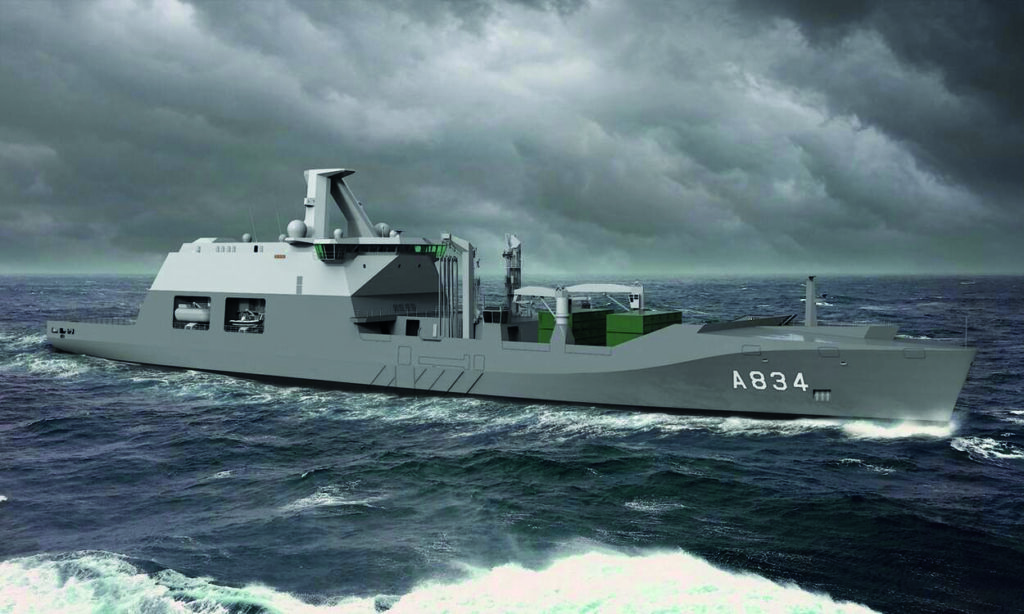
The Multi Use Accoustic Support Suite (MUASS) will also be introduced on the ships at the end of this year. This software was developed by DMO and the Dutch Navy together with TNO and is based on an existing TNO sonar model. Data and algorithms have been added to this, such as data from the ship, sensors, environmental information and oceanographic models. It resulted in a package that, as sea tests now show, brings major improvements to anti-submarine warfare by ship and submarine.
Although these important elements are already deployed at sea with the current frigates, it will take a while before the new ships can start looking for submarines. The contract for the ships is expected to be signed at the end of 2021 with the four ships for the Netherlands and Belgium are scheduled to be delivered in the period 2027-2030. DMO is investigating whether there is a sufficient budget to build the frigates at the Damen yard in the Netherlands and not, as has been usual practice since 2005, at Damen’s shipyard in Romania.
Combat Support Ship
The first new ship the Dutch Navy will receive is not an MCMV or a frigate, but a tanker. The combat support ship (CSS), the future HNLMS DEN HELDER, will be delivered in 2024.
In contrast to the other projects, the CSS project started only recently. After the decommissioning of HNLMS ZUIDERKRUIS in 2012 and the sale of HNLMS AMSTERDAM in 2014, the Dutch Navy lacked a tanker until the arrival of HNLMS KAREL DOORMAN.
However, because it was decided not to replace the AMSTERDAM, the KAREL DOORMAN became the only tanker in Dutch service, even though it is a joint support ship (JSS) and replenishing at sea is only one of the tasks of this multifunctional ship.
It was no surprise that when HNLMS KAREL DOORMAN was commissioned, the Chief of the Royal Netherlands Navy said that he needed another replenishment ship. When in late 2016, budget funds became available for ‘combat support’ for all defence services, the Navy managed to squeeze a ‘combat support ship’ into the plans. At the time, it was still intended to be a fairly simple tanker that would be based on a proposal that DSNS had already designed for a tender for a new Norwegian tanker. In addition, elements from the JSS would be used for commonality.
DMO and DSNS worked jointly the design and specifications. However, the requirements changed gradually, especially when it came to the environment, but the requirements for shock, blast and signature reduction were also higher than in the beginning. The design boasted a gun, the advanced Thales NS100 radar and a GOALKEEPER CIWS (which is being replaced). But a budget deficit arose because the estimates of the investment budget were not indexed and the Navy feared that the operating budget of the tanker would be too tight. At that time, DMO realised that the design did not fit the budget.
Ultimately, it was decided to increase the budget and simply adjust the design. The weapon systems and sensors were removed from the design, however, provisions for these systems have been spared.
On 19 February 2020, Damen and DMO signed the contract for the ship. In February 2021, construction of the vessel will begin at Damen Shipyards Galati, in Romania. The CSS will arrive in Den Helder in June 2024, after which the combat management system, sensors and weapon systems will be installed. The CSS is scheduled to be commissioned in 2025.
The new Dutch tanker will measure 178.3 m in length and will have a displacement of 22,585 tonnes. There is room for 160 people in total, including a complement of 75 crewmembers. Weapon systems will initially be limited to machine guns. The propulsion of the CSS is diesel-electric and the DEN HELDER will be the first naval vessel to sail with the new WÄRTSILÄ 31 diesel generator sets. Combined with the shape of the hull and the design of the propeller, the design yields a saving of 6% compared to a comparable ship with engines of a different brand and type.
Submarines
The replacement of the WALRUS class submarines (1990) is by far the most complex project of all the current Dutch naval projects. As with the frigates and MCMVs, the plans were already clear in 2013, but it is by no means certain whether the first new submarine can be delivered in 2027.
The complexity of the project relates to its international nature and major political interests. The other naval projects have, however, continued to progress without too much political interference. In the submarine project, however, there have always been conflicts of interest between the Ministry of Defence (the best boat), the Ministry of Finance (the cheapest boat or nothing at all), Economic Affairs (a Dutch submarine) and Foreign Affairs (a decision that does not result in an argument with Paris or Berlin). The Submarine Service, in the end, has relatively little to no influence.

The roots for this can be found back in the eighties and nineties. The WALRUS class were more expensive in the 1980s and were delayed. Despite the fact that the boats were cheaper and have a higher rate of availability than contemporaries of the VICTORIA class (Canada) and COLLINS class (Australia), this is still called the WALRUS affair and politicians still shudder at the thought of the “scandal”. Another reason is that, partly due to political disinterest, the Dutch submarine shipyard RDM ran out of work from the 1990s and went bankrupt a few years later. Without a submarine builder, the Netherlands had to cooperate with foreign shipyards. Furthermore, the Netherlands wants diesel-electric submarines that can operate far from home. Dutch coastal waters are too shallow for safe submarine operations, so these submarines have been active in the Indian Ocean, and from the Norwegian Sea to the Caribbean. The result is a sensitive international process with a large number of committees, councils and resonance groups, and a lot of delay.
Initially, four shipyards participated in the tender. These were Navantia (Spain), Naval Group (France), TKMS (Germany) and Saab (Sweden). Naval Group has recently started Royal IHC as a partner in the Netherlands, and Saab has been working with Damen on the replacement project since 2015.
In December 2019, under political pressure, the MoD decided to continue the next round with three shipyards and start the competitive dialogue with Naval Group, Saab and TKMS.
This led to excessive criticism from experts and from parliament. Nevertheless, the Ministry of Defence wants to continue with this and a final decision will only take place in September.
If the Ministry’s plans go ahead, discussions will be held with the shipyards about the requirements and the design. This normally happens between DMO and DSNS, but DMO now want to talk to the three yards at the same time. None of the shipyards though has a design matching exactly the Dutch requirements. The existing submarines are either too small (Saab Kockums A26 and TKMS Type 212CD) or too large (Naval Group BARRACUDA SSN). Although the yards have already submitted proposals in the various RFIs, DMO has not yet told the yards what the requirements are.
Knock-out criteria will determine which yards will drop out prematurely. The contract must be signed in 2022 with the four new submarines expected to be completed between 2027 and 2031.
Auxiliary Vessels
DMO wants to replace ten smaller ships all at once. In May 2020, DMO sent a letter to the Dutch Parliament regarding the replacement of submarine tender HNLMS MERCUUR (1987), diver training vessel SOEMBA (1989), four diver support vessels CERBERUS class (1992), training vessel VAN KINSBERGEN (1999), two hydrographic survey vessels SNELLIUS class (2003) and the Caribbean support vessel HNLMS PELIKAAN (2006).
Although the ships are all different and the replacements will not be identical, according to DMO the ships have many similarities and the DMO therefore wants to tender the ships simultaneously. It is still being decided whether this is to be done by a contract directly awarded or by a (European) tender. What the final path looks like will be announced at the end of 2021/ beginning of 2022. The first ship will have to be replaced around 2024.
Air Warfare and Command Frigates
The Air Warfare and Command frigates (LCFs) entered service in the period 2001-2005. The ships are currently being modernised with AESA radars for, inter alia, ballistic missile defence (BMD), the Thales SMART-L MM / N. In the near future, the frigates will also receive Leonardo’s VULCANO 127/64 LW naval gun. These new guns will replace the antiquated 127 mm OtoBreda guns, which were bought second hand from the Royal Canadian Navy.
The LCF replacement project was expected to start in 2021, but in 2019 a decision was taken to postpone the timeline by five years because funds were needed to improve buildings instead and because the rising costs for the F-35 had to be covered.
The German plans to replace the F124 frigates might also have been a factor. Because Damen will collaborate with the German shipyards Blohm + Voss, Lürssen and German Naval Yards for the construction of the German MKS 180 frigates, there are talks between the Dutch and German MoDs to replace the LCFs and F124s together. Both ships, incidentally, arose from the failed NATO Frigate for the Nineties (NFR90) and both countries collaborated in the field of sensors and weapons systems. However, the Dutch director of DMO, Arie Jan de Waard said that the Netherlands currently had no plans to build identical ships with Germany. He is currently focused mostly on the subsystems.
Landing Platform Dock
The Royal Netherlands Navy operates two landing platform docks (LPD): HNLMS
ROTTERDAM (1998) and HNLMS JOHAN DE WITT (2007). The ROTTERDAM has been on the list of ships to be replaced for some time, but in 2013, it was announced that the replacement vessel had been postponed.
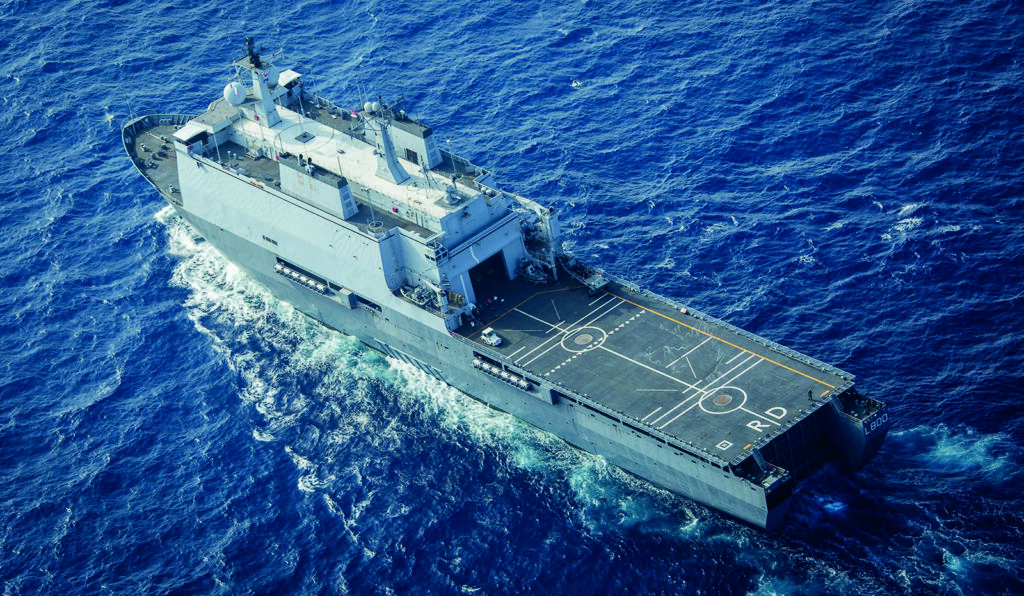 HNLMS ROTTERDAM has been on the list of ships to be replaced for some time, but in 2013 it was announced that the replacement programme had been postponed. (Photo: Damen Shipyards)
HNLMS ROTTERDAM has been on the list of ships to be replaced for some time, but in 2013 it was announced that the replacement programme had been postponed. (Photo: Damen Shipyards)
Incidentally, the ROTTERDAM was modernised in 2019 and equipped with, among other things, the new Thales NS100 radar, a combined operations room and an amphibious warfare centre. The JOHAN DE WITT will also receive a midlife upgrade shortly.
In June 2020, the Dutch MoD announced that it planned to collaborate with Germany on new amphibious vessels. While the German Navy does not possess these vessels, its own Seebataillon (an integral part of the Dutch Marine Corps since 2016) does engage in the amphibious domain.
Replacement, no Enlargement
Not all plans are set in stone – some are no more than sketches and the future has now become more uncertain due to the Coronavirus pandemic. The high costs that Belgium and the Netherlands, like many other countries, will have as a result of this crisis, mean it is highly likely that projects will experience difficulties in the coming years, although there are no plans for budget cuts so far.
In both countries, there is also much political uncertainty. Belgium still has no government and there will be elections in the Netherlands in March 2021. For decades there have been budget cuts imposed on both navies and especially in the Netherlands, this has led to a large backlog with many relatively old ships still serving in the fleet. The backlog is now being addressed, but the Navy remains very vulnerable. Also, both the Belgian and Dutch Navies, with two and six frigates respectively, are small. However, all efforts are now focused on replacement, as enlargement seems to have been ruled out this decade.
Jaime Karremann




